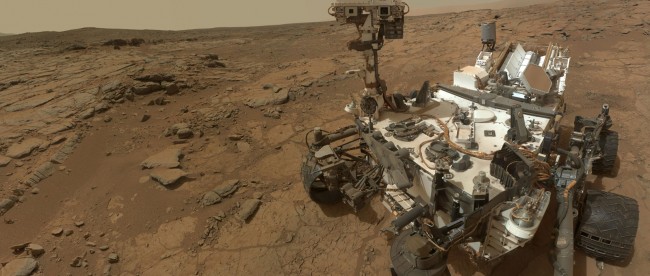The Weekender: March 11, 2016

1) “There Will be Netflix on Mars” (Popular Mechanics, 16 minutes, March 2016). There won’t be Netflix on Mars any time soon, at least not in any practical sense. But there may be something akin to high-speed Internet. Right now, it takes a long time for us to send messages to whatever rover-esque device we have on Mars, and if future Mars missions are going to be viable, that has to change.
The NASA Deep Space Network – or DSN – is an international network of antennas that supports interplanetary spacecraft missions and radio and radar astronomy observations for the exploration of the solar system and the universe. The network also supports selected Earth-orbiting missions. The DSN currently consists of three deep-space communications facilities placed approximately 120 degrees apart around the world: at Goldstone, in California’s Mojave Desert; near Madrid, Spain; and near Canberra, Australia. This strategic placement permits constant observation of spacecraft as the Earth rotates, and helps to make the DSN the largest and most sensitive scientific telecommunications system in the world. NASA’s scientific investigation of the Solar System is being accomplished mainly through the use of unmanned automated spacecraft. The DSN provides the vital two-way communications link that guides and controls these planetary explorers, and brings back the images and new scientific information they collect. All DSN antennas are steerable, high-gain, parabolic reflector antennas. The network is managed and operated for NASA by the Jet Propulsion Laboratory.
The future of space travel demands better communication. The pokey pace at which our current Martian spacecraft exchange data with Earth just isn’t enough for future inhabitants who want to talk to their loved ones back home or spend a Saturday binge-watching Netflix. So NASA engineers have begun planning ways to build a better network. The idea is an interplanetary internet in which orbiters and satellites can talk to one another rather than solely relying on a direct link with the Deep Space Network, and scientific data can be transferred back to Earth with vastly improved efficiency and accuracy. In this way, space internet would also enable scientific missions that would be impossible with current communications tech.
2) Check this out: Plug into the 8@8, the day’s 8 biggest stories, sent bright and early. Check it out here.
3) “K Troop: The story of the eradication of the original Ku Klux Klan” (Slate, 47 minutes, March 2016). Rumor has it that Amazon is turning this into a feature-length film. The short version: the Army intervened shortly after the Civil War. The long version — well, it’s very long, but worth the time.
4) “Shrink” (Radiolab, 45 minutes, July 2015). It’s a podcast, not an article. And I’m only 40 minutes into it right now (but by the time you read this, that may not be true). But: wow. The discussion is an unedited interview with New York Times science journalist Carl Zimmer focused on viruses which are much bigger than the science community thought was possible. As the story unfolds, I kept finding myself saying “wow, but that means that ___” only to have Zimmer and the hosts come to the same conclusion — and investigate further. A great listen.
WeekenderAdUnits
5) “Welcome to the Land that Nobody Wants” (The Guardian, 25 minutes, March 2016). This is about Bir Tawil, which I’ve written about before. Sudan and Egypt are in a territorial dispute over another piece of land and, logically, in order to claim that area, neither can lay claim to Bir Tawil. That leads to other people trying to claim it for their own.
In June 2014, a 38-year-old farmer from Virginia named Jeremiah Heaton did exactly that. After obtaining the necessary paperwork from the Egyptian military authorities, he started out on a treacherous 14-hour expedition through remote canyons and jagged mountains, eventually wending his way into the no man’s land of Bir Tawil and triumphantly planting a flag.
Heaton’s six-year-old daughter, Emily, had once asked her father if she could ever be a real princess; after discovering the existence of Bir Tawil on the internet, his birthday present to her that year was to trek there and turn her wish into a reality. “So be it proclaimed,” Heaton wrote on his Facebook page, “that Bir Tawil shall be forever known as the Kingdom of North Sudan. The Kingdom is established as a sovereign monarchy with myself as the head of state; with Emily becoming an actual princess.”
6) “What’s the tallest loop-the-loop roller coaster that we could ever build and ride safely?” (Medium, 16 minutes, February 2016). A discussion on the physics of roller coasters. Also: you’re probably not familiar with the “euthanasia coaster,” a roller coaster design which, due to the design, deprives riders of oxygen. Don’t worry — it’s theoretical, not real.
Have a great weekend!
